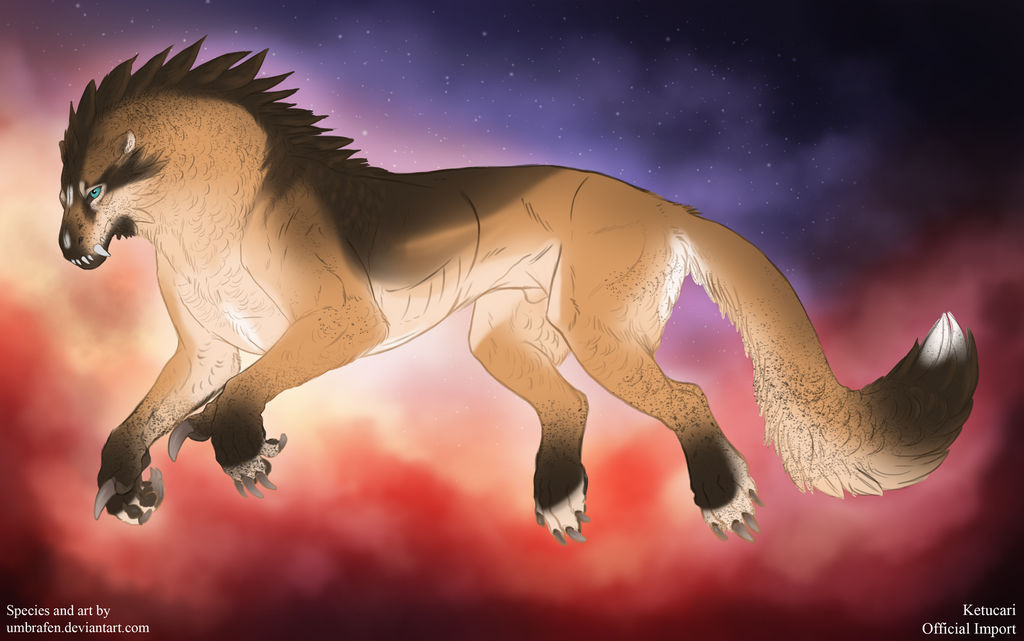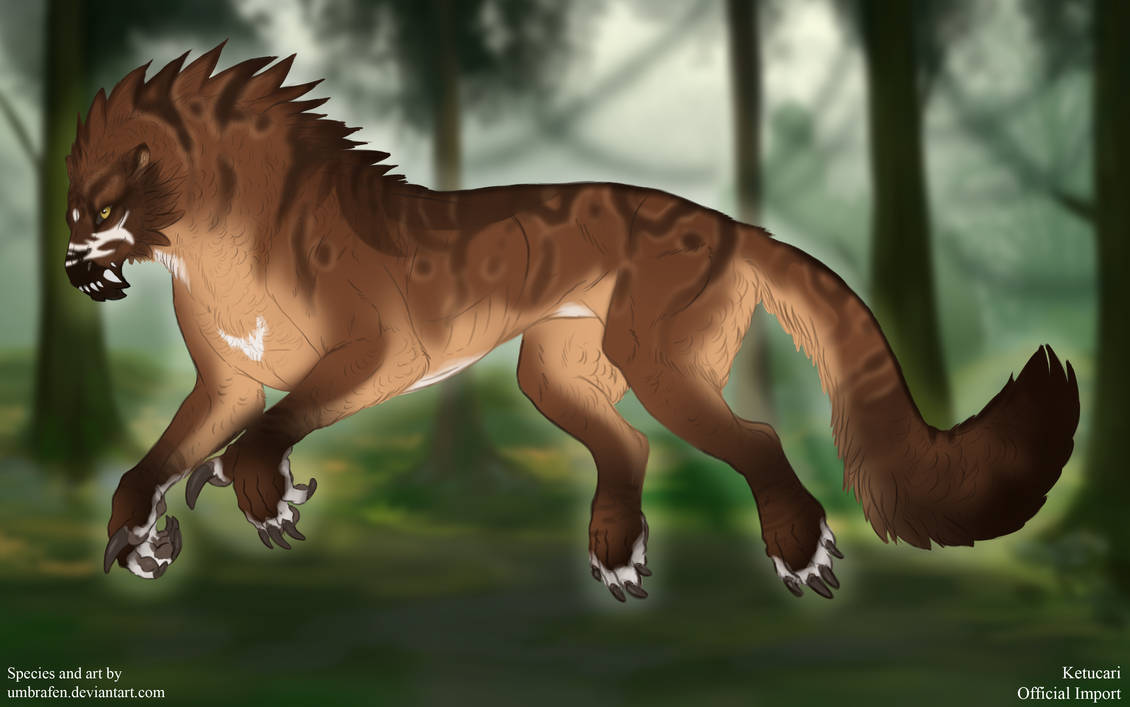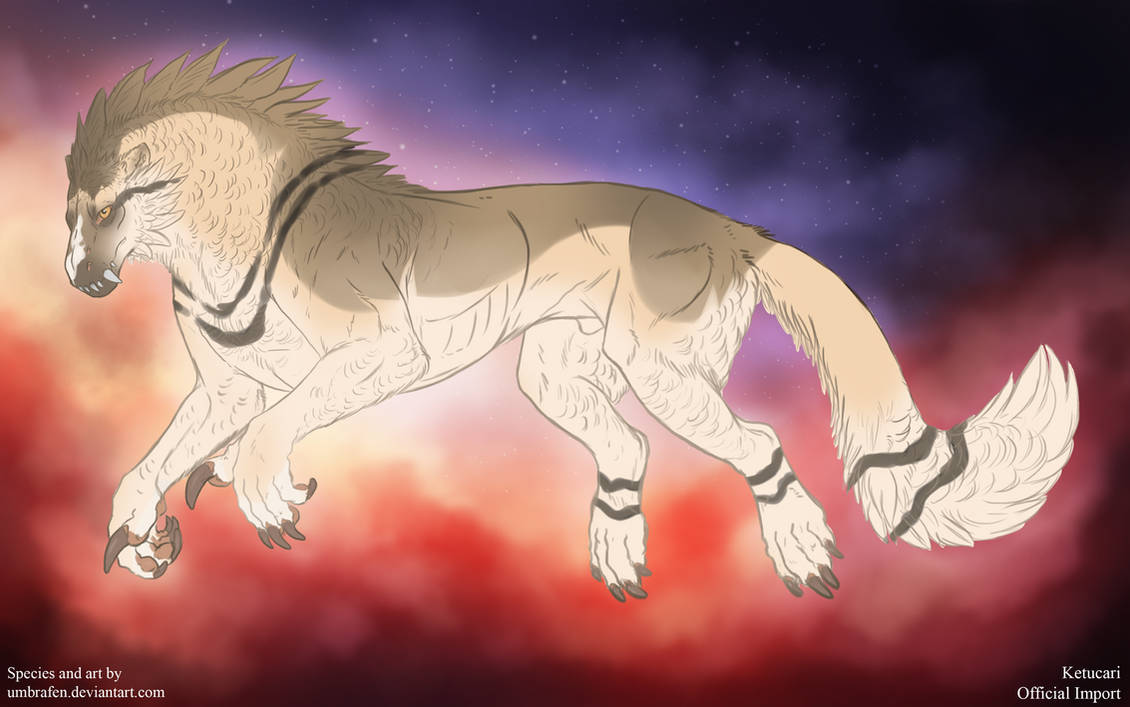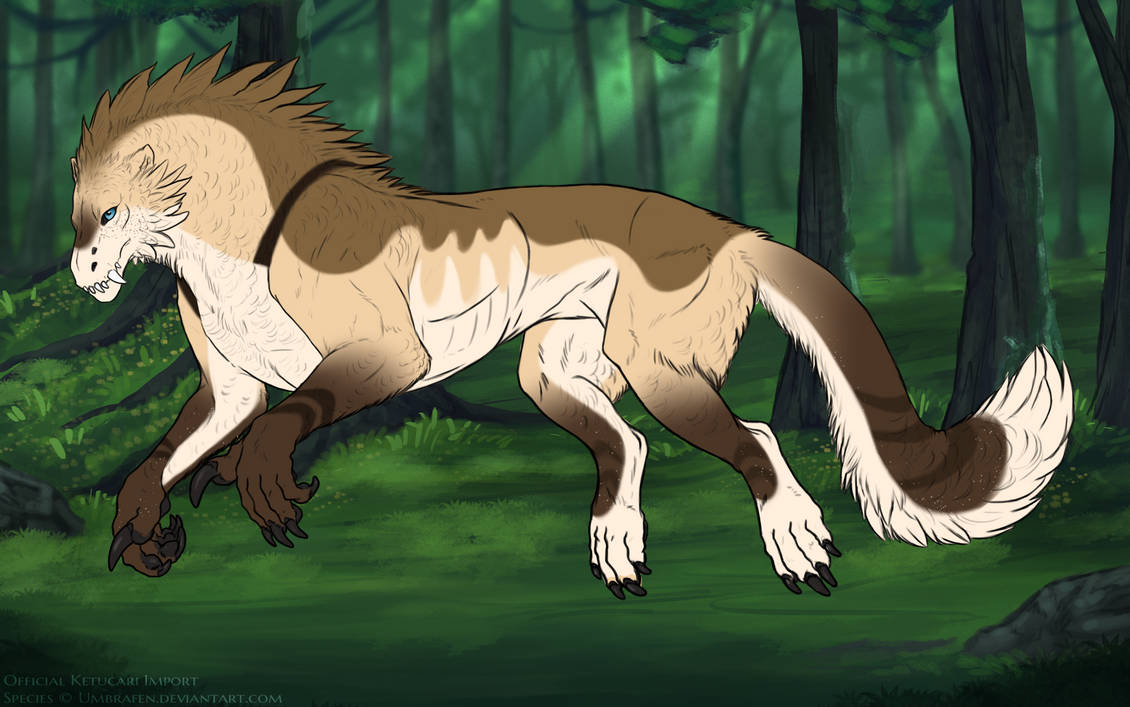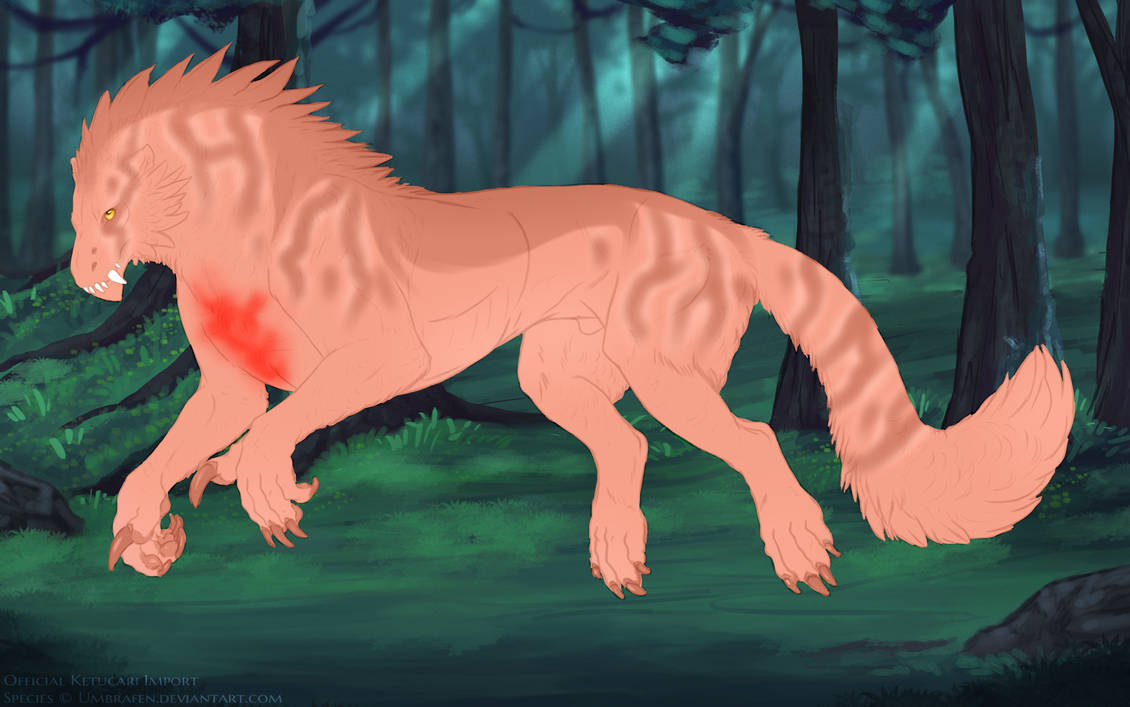Mantle
Examples
Basics
Color and Shape
Mantle can be hard or have a slightly blended edge, but must not be so blended that it resembles sable. It may have slightly jagged edges, but must not be too irregular or tattoo-like. Jagged edges will always sweep toward the ketucari's hindquarters, while those on the shoulders and neck will follow the curve of the shoulders and neck.
Mantle must be a darker color of your chosen base, with a minor deviation in hue. It can also be a fully desaturated color of the base, as long as it is darker. Mantle may be pure black.![]()
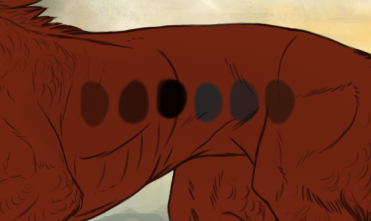
These colors would be acceptable for this base color. They are either a darker version of the base, or a darker and desaturated version of the base. The last color on the right shows a minor deviation in hue, and is slightly more yellow than the base itself. Notice that this small change is not overbearing.![]()
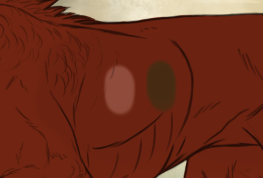
These colors would be unacceptable for mantle. They are either lighter than the base coat or have too drastic a hue shift.
Mantle may have a line going through it along the ketucari's spine, where the base coat shows.
Below is the maximum width of this stripe.
Range
Range for mantle. Blue is the maximum while green is the minimum. If using the minimum mantle,
you may not have a thick stripe as is pictured above.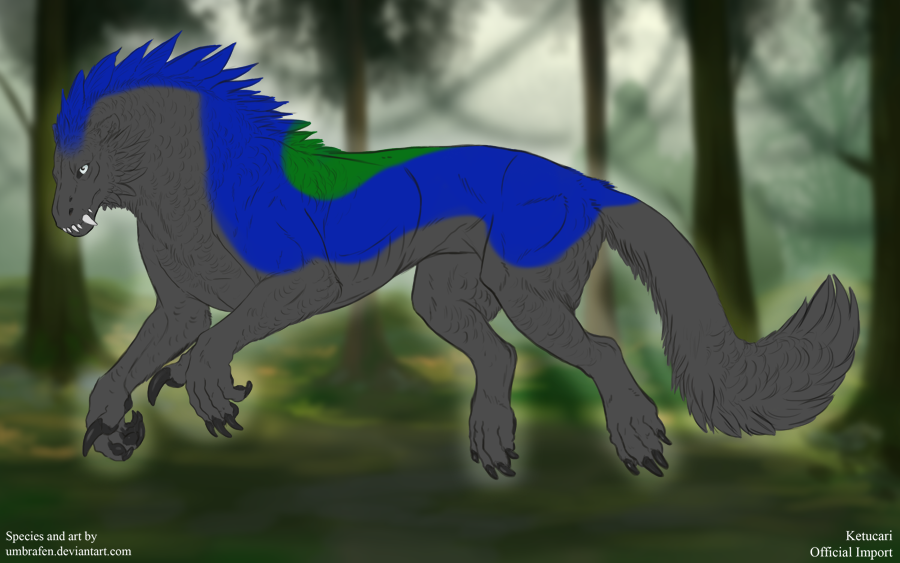
Interaction with Other Markings
![]() All markings can be layered under or over mantle.
All markings can be layered under or over mantle.![]() Mantle can be influenced by Inferno, Vapor, Segment, And Pale
Mantle can be influenced by Inferno, Vapor, Segment, And Pale![]() Mantle may be affected by Empty, allowing it to appear as an outline or with a cutout.
Mantle may be affected by Empty, allowing it to appear as an outline or with a cutout.
Accents
Here are some small accents you can add to your designs to make them more unique!
• Mantle may have a subtle gradient, like below:
